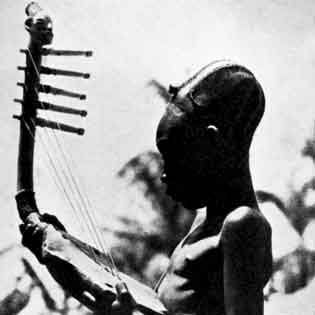Autism, Alloparents and Human Evolution
It seems that the Sarah Blaffer Hrdy book, Mothers and Others: The Evolutionary Origins of Mutual Understanding, is blowing my mind. I am discovering a new, yet established, researched human evolution paradigm that feels deeply complementary to my work. Hrdy’s theorizing is introducing me to astonishing insights as I am able to approach my own thoughts from her alternative direction.
Hrdy hypothesizes that humans evolved from within societies that supported an ability of women to raise children as part of communities that encouraged the development of compassion and theory of mind. Each child had several parents or alloparents, significant others, usually females, often grandmothers. Recent studies have observed that in aboriginal hunting and gathering societies, more children survived in societies where more than just a mother and father were intimate with the boy or girl; there were others who were integral to the child’s well-being. In addition, studies have discovered that in those societies, children with older siblings were more likely to survive. In addition, children with older siblings had a more advanced theory of mind than children without older siblings or only children.
“The more older siblings a child has, engaging (and also perhaps tormenting) her, the better a child does on tests that require her to see the world the way someone else does. On closer examination, however, it turns out that it is not so much the number of siblings that matter as the fact that some are older.” (Hrdy, Mothers and Others, p. 136.)
This feels significant as it relates to autism. Several things come to mind. Autism studies have shown that firstborn children and children born to older mothers are more likely to have autism. Older mothers are  higher in testosterone, so that makes sense. With the discovery that children with no older siblings in Western households without extended families are revealing a less developed theory of mind, it becomes a possibility that this contributes to autism.
higher in testosterone, so that makes sense. With the discovery that children with no older siblings in Western households without extended families are revealing a less developed theory of mind, it becomes a possibility that this contributes to autism.
If only children born to older mothers have even higher rates of autism, this would further support the hypothesis.
A recent study that concluded that wealthier parents were more likely to have children with autism also fits this paradigm. The wealthier often have their children later, and usually they have only one or two children. It is quite possible that autism is congregating in higher-income households because those homes have children with mothers with higher testosterone levels (they are older) with no older siblings to encourage theory of mind.
I would predict that wealthier African-Americans having one child when the parents are older would be a particularly vulnerable demographic.
What is implied is that if humans evolved while being raised in communities of females sharing responsibility for the nurturing of youth, and current child-rearing practices result in young neurologies feeling stripped of early multiple-person contacts, then we have a new way to intervene to make it possible for those with autistic tendencies to feel part of the community.
Hrdy describes the profound effect that multiple mothers (and sometimes fathers) may have had upon our evolution. I’m suggesting that movements away from that paradigm in a modern context are resulting in autism. Hrdy hypothesizes that societies evolved while becoming dependent upon a social set-up that combined very long childhoods and many important, intimate adults. Hrdy’s work suggests a compromise of the species if it occurs that society changes and there are long childhoods without several intimate adults.
“…once mothers embarked on an evolutionary course of producing unusually large, slow-maturing, needy, and long-dependent offspring, there was no turning back. Without help from others, such children could not survive.” (Hrdy, Mothers and Others, p. 140.)
This is a form of evolutionary feedback, potentially runaway evolutionary feedback, or, in the context of social structure, runaway sexual selection. According to Hrdy’s hypothesis, once theory of mind develops and compassion is commonly engaged, because they directly contribute to the survival of young in alloparent-robust societies, those societies are prevented from slipping in patrifocal directions or the result would be increases in child mortality. The options are only stasis or evolution in an alloparent direction.
Neotenous evolution, of course, is central to this dynamic. With the dance-driven evolution paradigm that I’ve described, there is a strong, exponential brain-growing element. Hrdy’s theory doesn’t suggest why massive, lightning-fast brain growth is necessary for the evolution of compassion. Other species display a sharing of parenting among multiple principals and don’t exhibit larger brains. Still, Hrdy’s theory strongly supports a matrifocal dynamic that is integral to the Orchestral Theory of Evolution I describe.
I expect this is only the beginning of my integrating Hrdy’s theories into the work that I am involved with. That her work so obviously suggests new understandings of autism feels deeply satisfying.
…
Proceed to author’s FREE book download on this subject (The book is called Evolution, Autism and Social Change). 10 minute introductory video here.
Andrew Lehman on 04/5/10 in Autism, featured | No Comments | Read More

